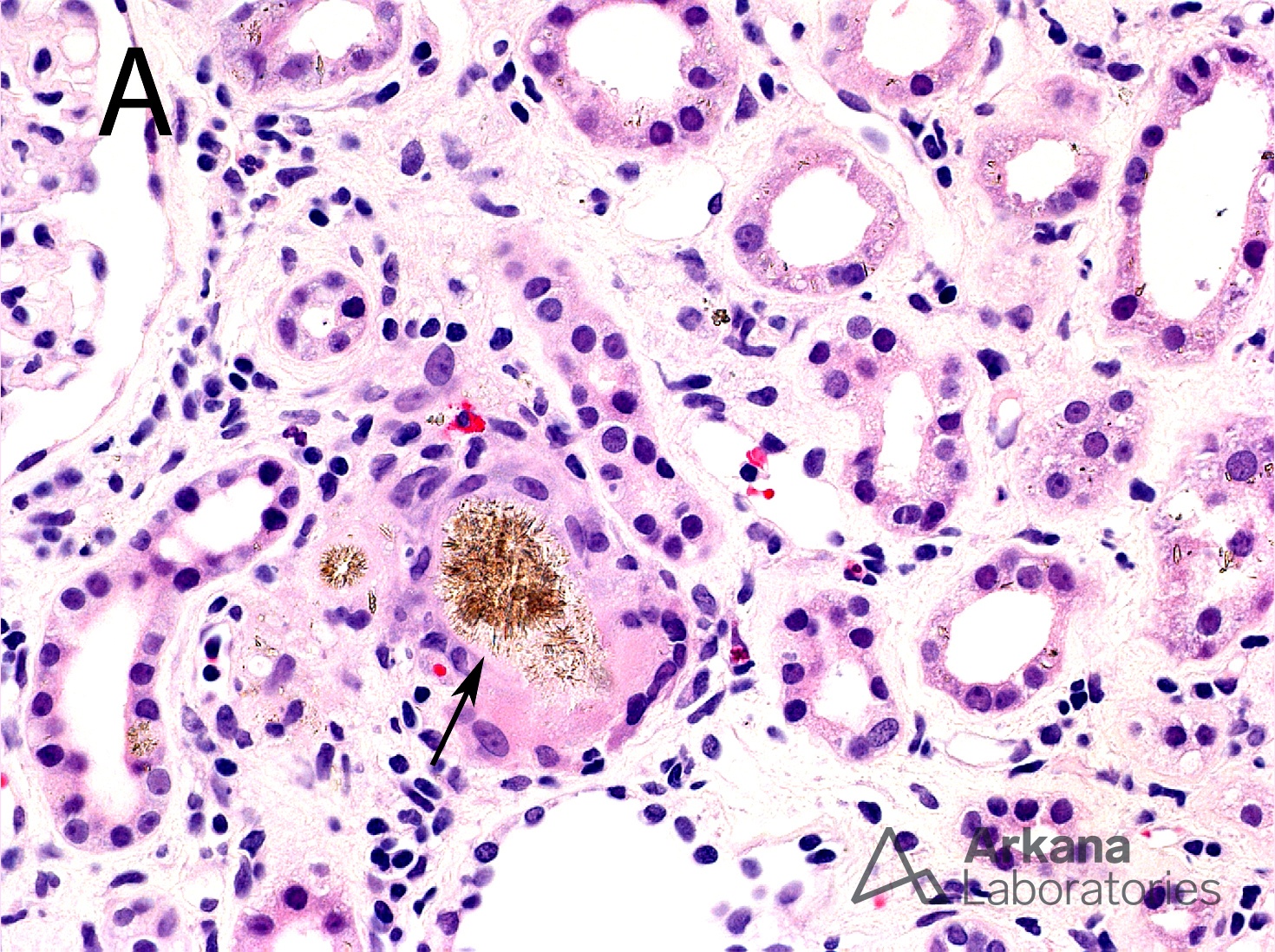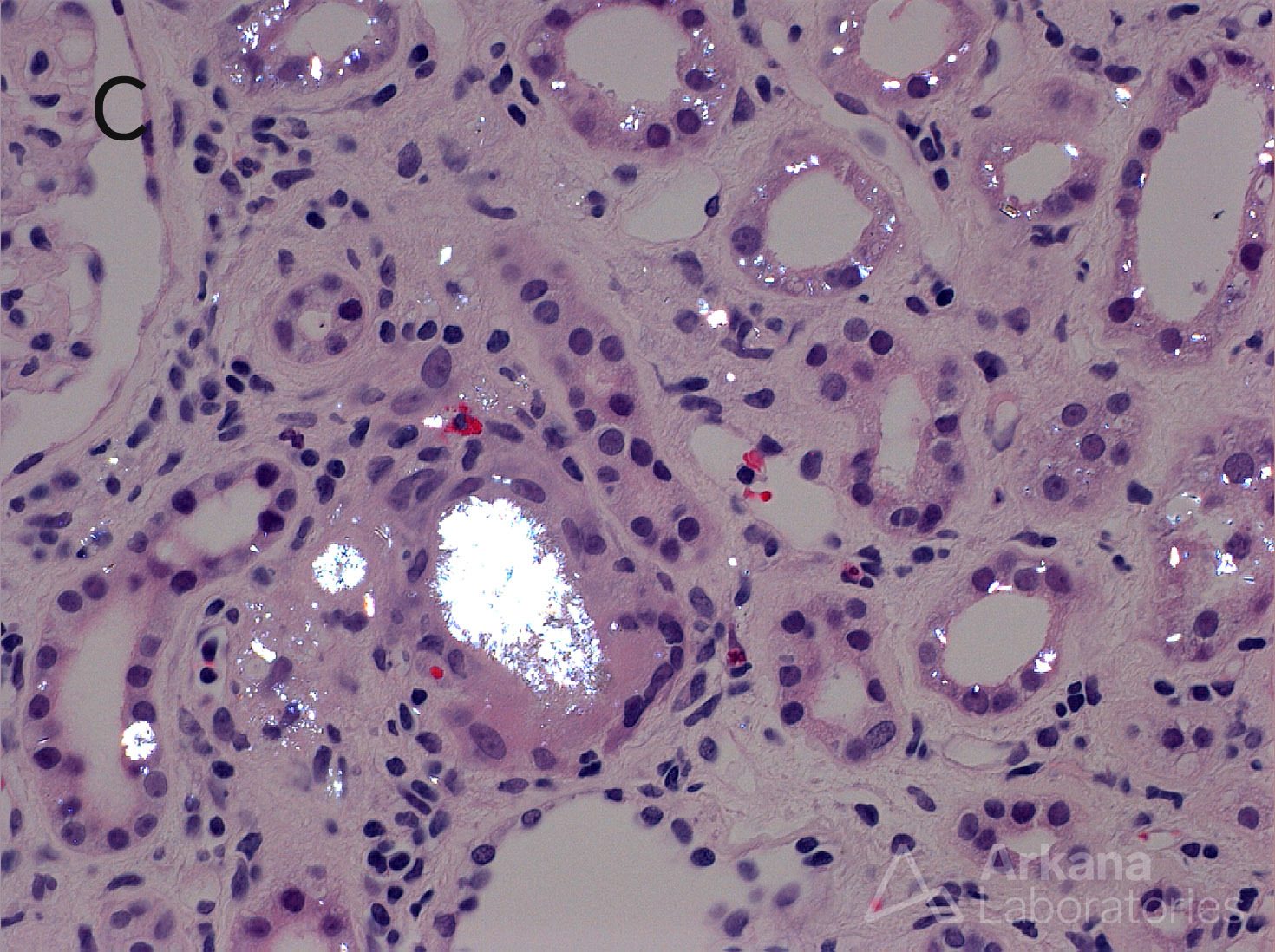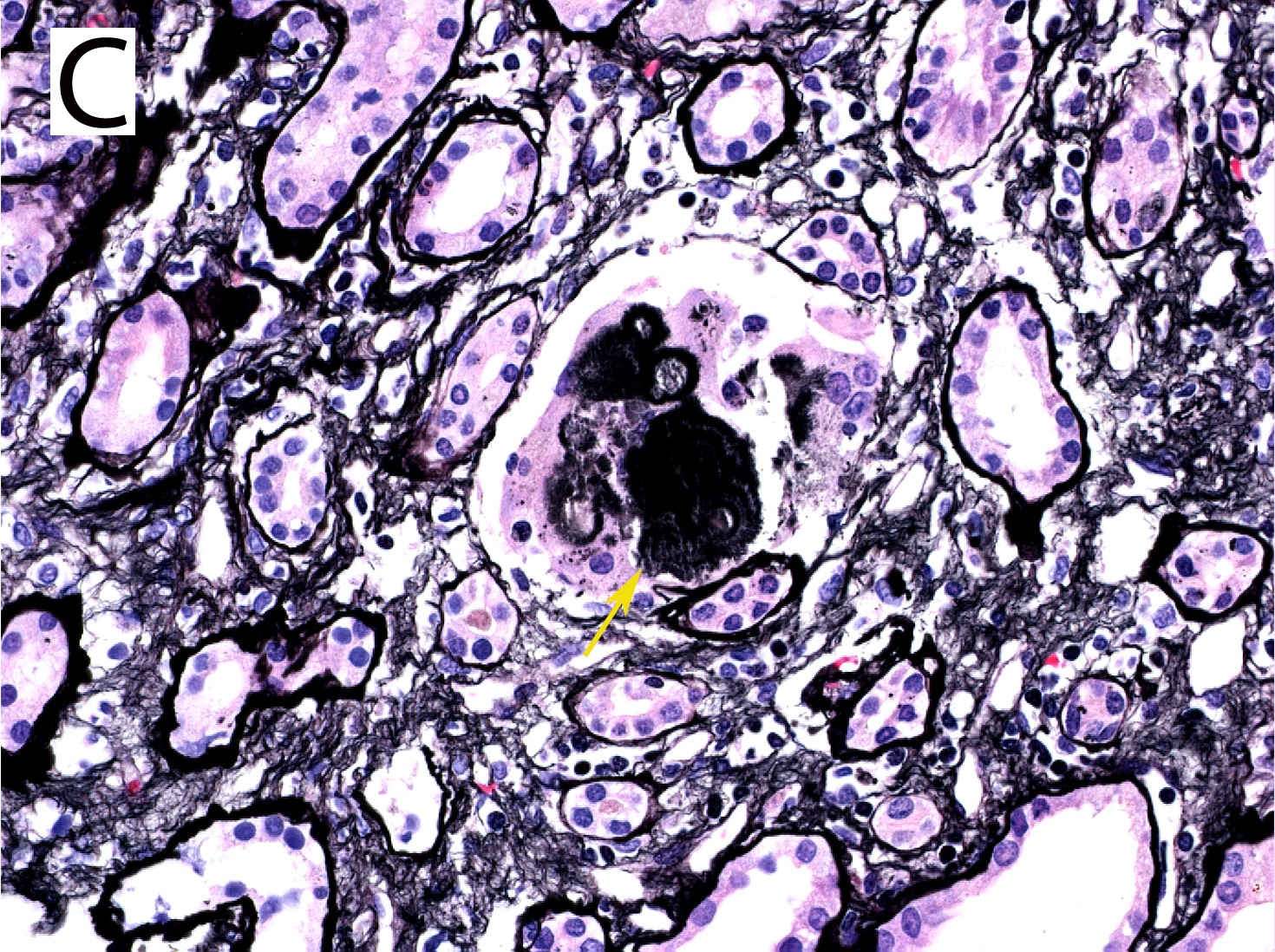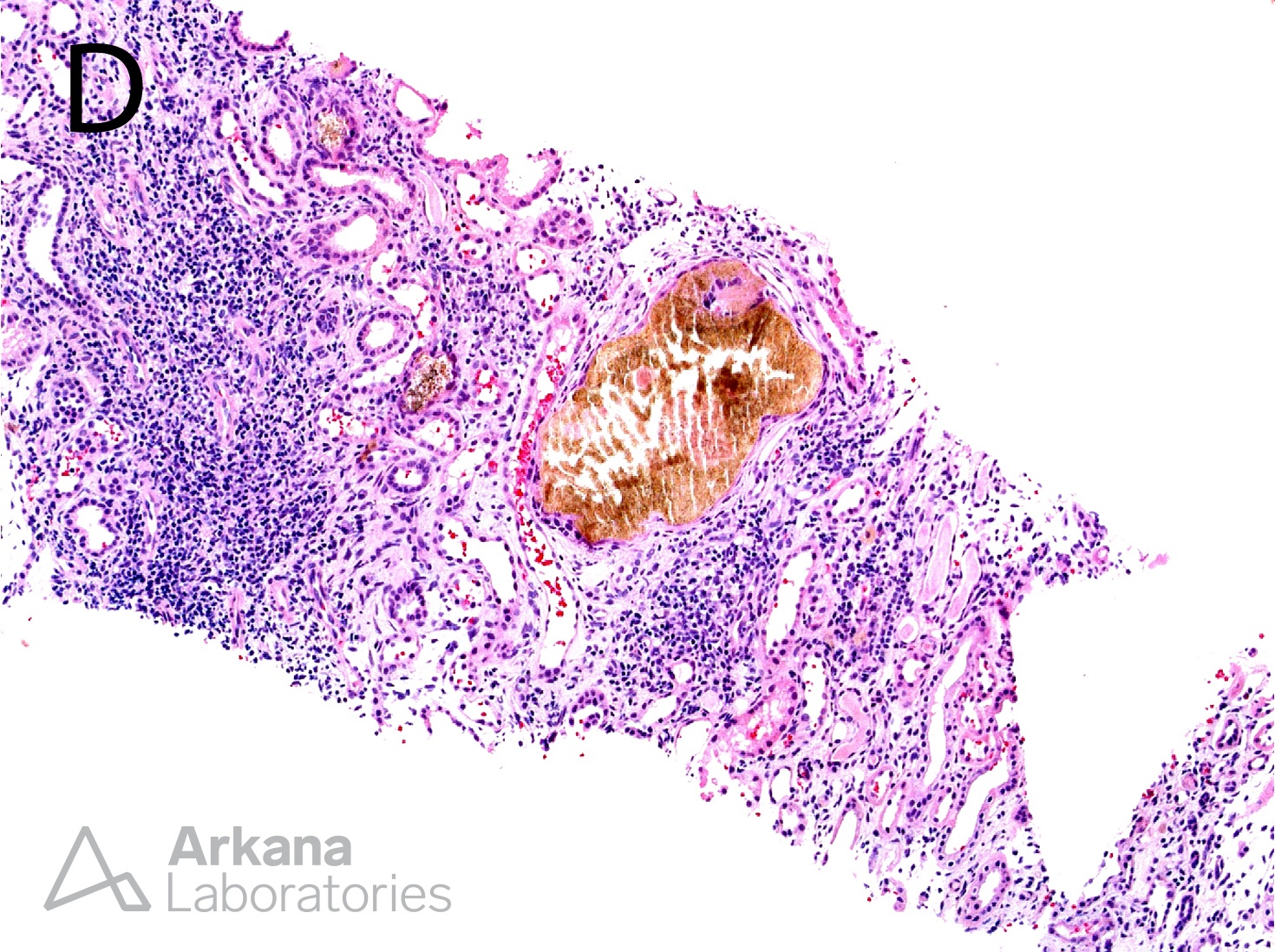Adenine phosphoribosyltransferase (APRT) deficiency results from an autosomal recessive enzyme defect of purine metabolism and leads to 2,8-dihydroxyadenine (2,8-DHA) crystalline nephropathy. The clinical presentation of this often misdiagnosed disease is widely variable among patients homozygous for APRT mutations, ranging from asymptomatic in some to reddish-brown diaper stains in infants to recurrent nephrolithiasis, and even CKD in the absence of nephrolithiasis. 2,8-DHA nephropathy has also been reported to recur in the renal allograft resulting in rapid allograft failure. Prompt and accurate diagnosis of this disorder is important so that treatment through pharmacologic inhibition of xanthine dehydrogenase can be initiated. The morphologic findings of 2,8 DHA crystals on renal biopsy are shown here. Small needle-shaped brownish crystals are present within the tubular lumens and epithelial cells (A and D) that are highly birefringent when examined under polarized light (B). The crystals are characteristically black by Jones methenamine silver (C).
Quick note: This post is to be used for informational purposes only and does not constitute medical or health advice. Each person should consult their own doctor with respect to matters referenced. Arkana Laboratories assumes no liability for actions taken in reliance upon the information contained herein.





